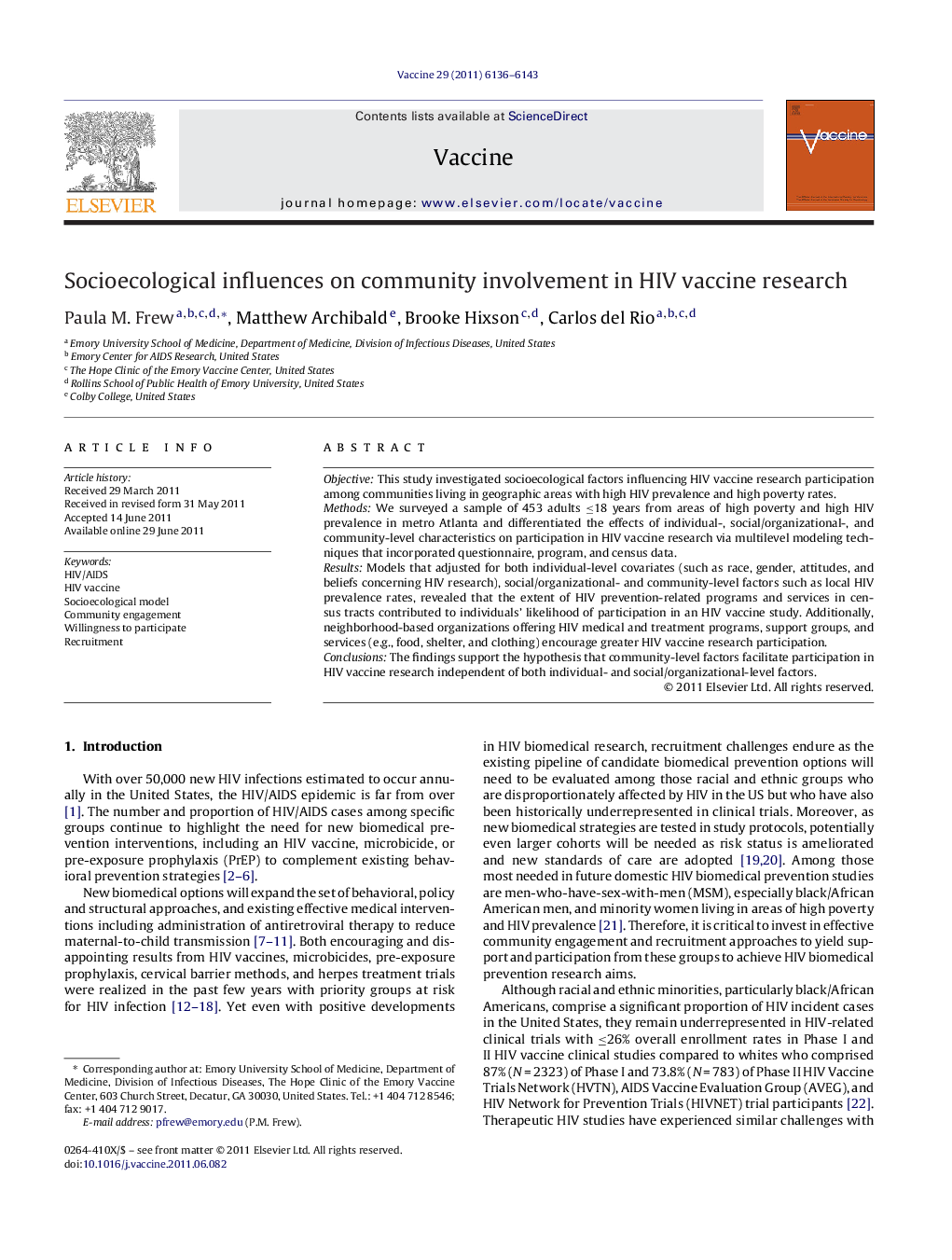| Article ID | Journal | Published Year | Pages | File Type |
|---|---|---|---|---|
| 2403556 | Vaccine | 2011 | 8 Pages |
ObjectiveThis study investigated socioecological factors influencing HIV vaccine research participation among communities living in geographic areas with high HIV prevalence and high poverty rates.MethodsWe surveyed a sample of 453 adults ≤18 years from areas of high poverty and high HIV prevalence in metro Atlanta and differentiated the effects of individual-, social/organizational-, and community-level characteristics on participation in HIV vaccine research via multilevel modeling techniques that incorporated questionnaire, program, and census data.ResultsModels that adjusted for both individual-level covariates (such as race, gender, attitudes, and beliefs concerning HIV research), social/organizational- and community-level factors such as local HIV prevalence rates, revealed that the extent of HIV prevention-related programs and services in census tracts contributed to individuals’ likelihood of participation in an HIV vaccine study. Additionally, neighborhood-based organizations offering HIV medical and treatment programs, support groups, and services (e.g., food, shelter, and clothing) encourage greater HIV vaccine research participation.ConclusionsThe findings support the hypothesis that community-level factors facilitate participation in HIV vaccine research independent of both individual- and social/organizational-level factors.
